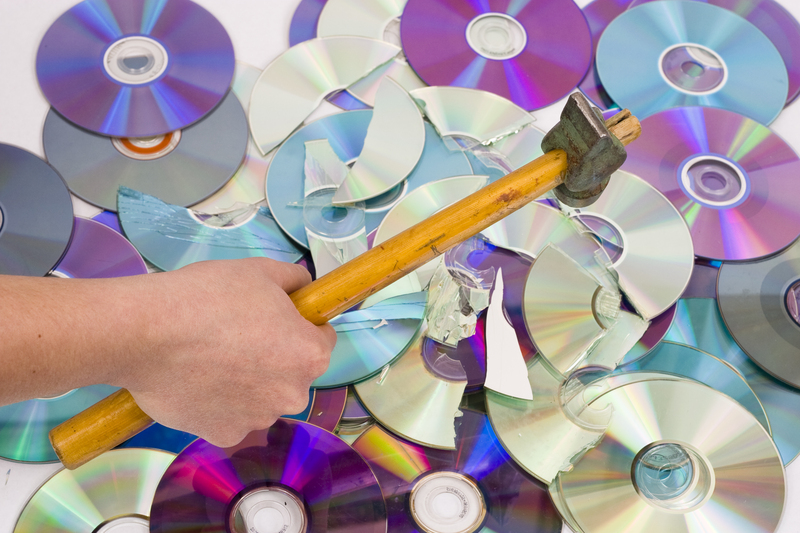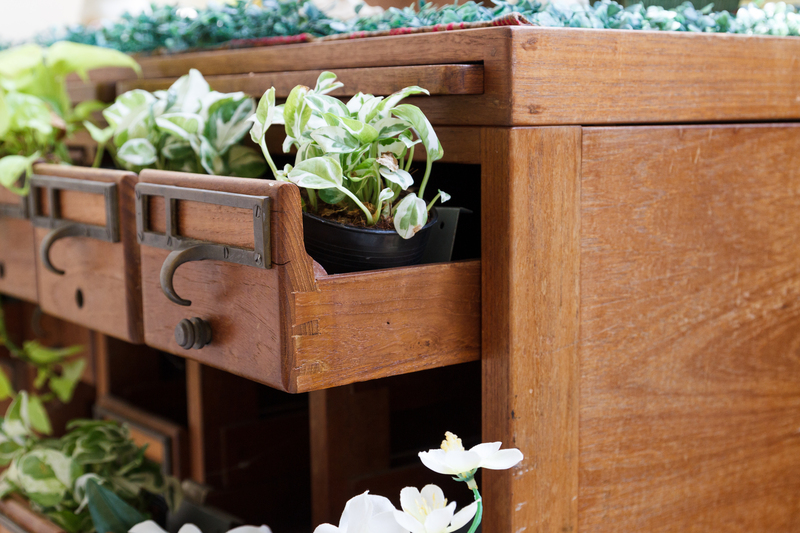Sustainable Plant Pot Disposal Practices: A Comprehensive Guide
In today's environmentally conscious world, the disposal of plant pots--from plastic to ceramic to biodegradable--plays a crucial role in sustainable gardening and eco-friendly horticulture practices. This article delves deep into sustainable plant pot disposal methods, offering actionable advice and innovative solutions for gardeners, nurseries, and plant enthusiasts seeking to minimize their environmental footprint.
Why Sustainable Plant Pot Disposal Matters
When nurturing plants, we often overlook how our choice of containers and their eventual disposal can negatively impact the planet. Traditional plant pots--especially plastic--contribute to landfill waste and microplastic pollution. Sustainable plant pot disposal practices help reduce waste, conserve resources, and support a circular gardening economy that prioritizes the environment.
- Contribution to landfill reduction: Millions of plant pots are discarded every year, yet most end up in landfills due to a lack of recycling awareness or infrastructure.
- Pollution prevention: Improper disposal leads to plastics leaching into water systems and breaking down into harmful microplastics.
- Resource conservation: Sustainable practices extend the lifecycle of containers and reduce the demand for new raw materials.

Types of Plant Pots and Their Environmental Impact
Understanding different types of plant pots is crucial for effective and eco-friendly disposal. Each material--plastic, ceramic, terracotta, and biodegradable--has a unique environmental profile.
1. Plastic Plant Pots
Plastic pots are lightweight, durable, and affordable, making them the most commonly used in nurseries and homes. However, traditional plastics are non-biodegradable and can persist in landfills for centuries if not recycled properly.
- Pros: Lightweight, inexpensive, reusable.
- Cons: Low recycling rates, high environmental cost, longevity in landfill.
2. Ceramic and Terracotta Pots
Ceramic and terracotta are natural materials, offering breathability and style. However, they are energy-intensive to produce, difficult to recycle, and often end up broken in the trash.
- Pros: Durable, aesthetically pleasing, promotes healthy root growth.
- Cons: Fragile, limited recycling options, heavy carbon footprint during production.
3. Biodegradable and Compostable Pots
Made from organic fibers like peat, coir, or paper, these pots are designed to decompose naturally in soil or compost.
- Pros: Naturally return to the earth, great for seedlings and direct-planting.
- Cons: Shorter lifespan, may require special composting conditions.
Eco-Friendly Plant Pot Disposal: Step-by-Step Guide
Ready to dispose of your plant pots responsibly? Follow these comprehensive and sustainable steps tailored to each pot type:
1. Reuse and Repurpose: The Greenest Solution
The most sustainable approach is often to extend the life of what you already have. Reusing plant pots in creative ways can save money and cut down on waste.
- Propagation: Use old pots to propagate cuttings or grow new seedlings.
- Organizers: Turn small pots into desk or workshop organizers.
- Craft projects: Decorate and gift them as personalized plant containers.
- Plant pot swaps: Organize swaps with neighbors or gardening groups.
2. Recycle: Proper Sorting and Cleaning
If reuse isn't possible, the next best option is to recycle plant containers according to local guidelines.
- Plastic pots: Check the recycling number (often located at the bottom). Wash pots thoroughly to remove soil, labels, and residue.
- Local recycling programs: Many garden centers offer take-back recycling for plastic pots--call ahead to confirm accepted types.
- Broken ceramic or terracotta: While not commonly recycled curbside, broken pots can be used as drainage material at the bottom of larger containers or for landscaping.
Note: Not all plastics are accepted curbside. Always consult your municipality's recycling guidelines.
3. Composting Biodegradable Plant Pots
- Remove labels and staples: Ensure only the pot material goes into your compost bin.
- Break into smaller pieces: This speeds up decomposition.
- Add to compost or bury in garden: These pots will enrich the soil as they break down.
Caution: Avoid adding pots made with synthetic polymers, even if labeled biodegradable, as they may not fully decompose in home compost systems.
Innovative Sustainable Plant Pot Disposal Ideas
Beyond recycling and composting, innovative solutions for sustainable plant pot management are gaining momentum. Here's what eco-minded gardeners and communities are doing:
- Upcycling: Transform large pots into mini water gardens or outdoor lights.
- Community drop-off events: Local garden clubs and centers organize events to collect and redistribute pots.
- Sharing networks: Online gardening forums, social platforms, and apps facilitate giving away unneeded containers.
- Nursery return programs: Some nurseries accept returned pots to sterilize and reuse for new plant sales.
- Pot exchange stations: Set up a labeled shelf or bin at your community garden where members can leave and pick up gently-used pots for free.
Choosing Sustainable Plant Pots: Prevent Waste at the Source
Responsible disposal begins with mindful purchasing. Choose plant containers that align with your sustainability values:
- Avoid single-use plastics: Opt for pots made from recycled or recyclable materials.
- Select biodegradable options: Especially for seeds or transplants, favor pots that can be planted directly in the soil.
- Support local artisans: Handmade ceramic pots crafted from regionally sourced clay have a lower carbon footprint and unique designs.
- Look for cradle-to-cradle certified products: These are designed for a full lifecycle, from creation to recycling or composting.
Tip: Always check labels and ask retailers about the sustainability credentials of plant containers before purchasing.
How to Encourage Community-Wide Sustainable Plant Pot Disposal
Widespread adoption of eco-friendly plant pot disposal practices requires community awareness and action. Here's how individuals and organizations can stimulate change:
- Educational workshops: Host sessions at libraries, schools, or community gardens about sustainable pot choices and local disposal programs.
- Collaborate with local governments: Advocate for curbside recycling of rigid plastics and promote clear labeling on which plant containers are accepted.
- Partner with garden centers: Encourage retailers to offer "pot return" bins for shoppers.
- Create signage: Develop and display clear guides on proper disposal at markets, nurseries, and gardens.
- Share successes: Use newsletters and social media to celebrate waste reduction milestones and innovative ideas.
Frequently Asked Questions on Sustainable Plant Pot Disposal
Can I put plastic plant pots in my curbside recycling?
Not always. Many municipal recycling programs do not accept garden plastics due to soil contamination or plastic composition. Check with your local recyclers or participate in garden center take-back schemes instead.
What should I do with broken ceramic or terracotta pots?
Use broken pottery in garden beds for drainage or as mulch. Otherwise, offer them to mosaic artists or community art projects if your local recycling facility doesn't accept them.
How do I know if my biodegradable pot is truly compostable?
Look for certifications such as ASTM D6400 or EN 13432, indicating that the product meets compostability standards. Avoid pots with synthetic additives or coatings.
Are there brands committed to sustainable plant pot production?
Several emerging brands use recycled plastics, agricultural waste, or naturally compostable materials. Always ask about manufacturing processes and end-of-life disposal options when selecting new pots.

The Role of Innovation in Plant Pot Sustainability
Ongoing research and eco-design are making sustainable plant pot disposal easier and more effective. From mycelium-based containers that naturally decompose to modular systems designed for repeated reuse, the marketplace is rapidly evolving.
- Bio-based plastics: Pots made from plant starches and waste fibers are hitting the market.
- Return-to-store incentives: Retailers offer discounts or loyalty points for returning used containers.
- Compostable labeling: Clear icons make sorting easier for consumers.
Conclusion: Towards a Zero-Waste Gardening Future
Adopting sustainable plant pot disposal practices is essential for an eco-friendly garden and a healthier planet. By reusing, recycling, choosing sustainable materials, and participating in local initiatives, every gardener can make a lasting, positive impact.
Remember, every plant pot reused or properly recycled matters. The journey to green gardening starts with small, conscious choices--let's embrace them for a better tomorrow.
Keywords: sustainable plant pot disposal, eco-friendly plant pots, plant pot recycling, sustainable plant container disposal, biodegradable pot disposal, plant pot reusing